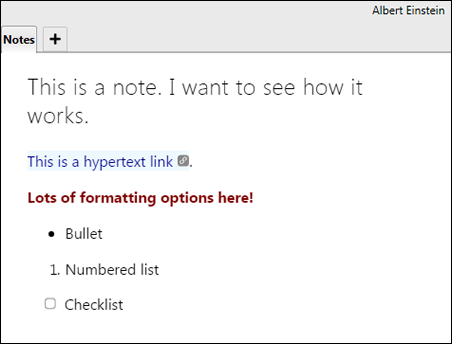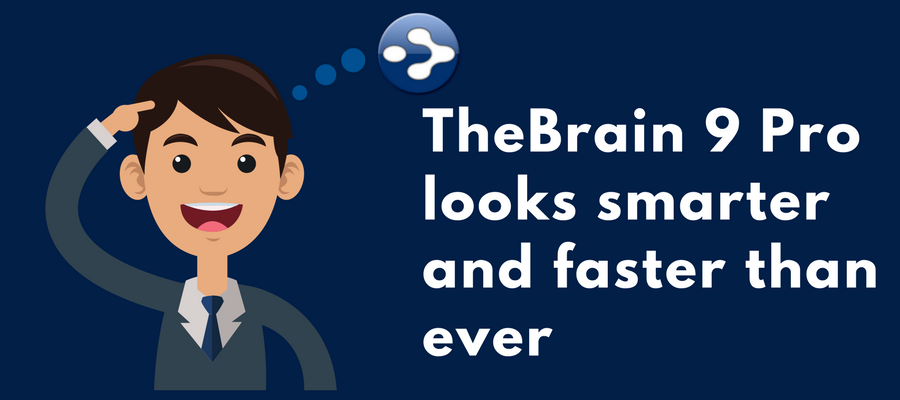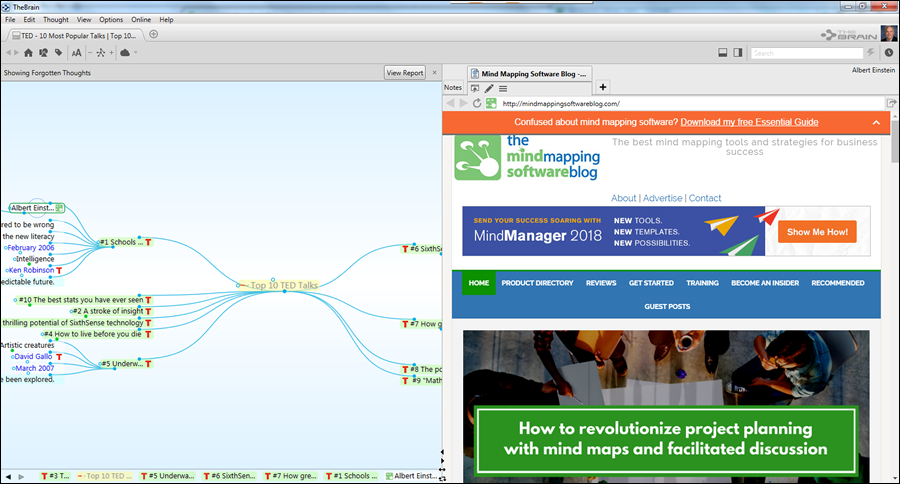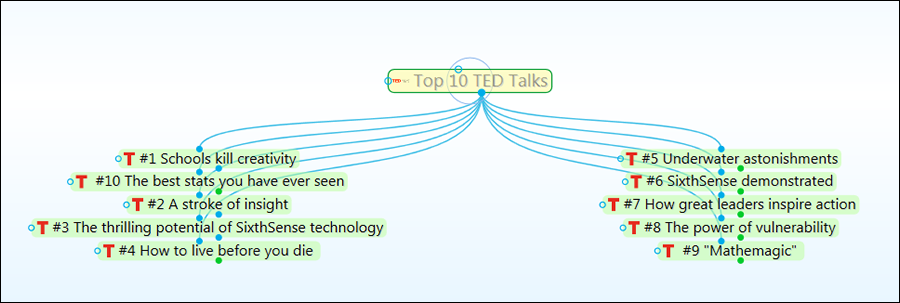Last month, TheBrain Technologies launched TheBrain 9, which has been re-created from the ground up for improved performance and stability. In addition, it features numerous usability enhancements that make it worth a fresh look.
For most of its 20-year life, TheBrain was powered by Java, Sun Microsystem’s powerful but sometimes wonky programming language. The engine behind TheBrain 9 is a new, proprietary brew of state-of-the-art software technologies, which make the new program significantly faster and more reliable than its predecessors. For the first time, TheBrain is a true native application on Windows, MacOS, iOS and Android, optimized for the OS-specific features of each platform.
Here’s what’s new, improved and notable in TheBrain 9 Pro:
New tabs speed access to multiple brains: The biggest and most visible user interface upgrade is a new tab interface at the top of the program’s workspace, which enables you to quickly move from one brain to another. You can even use it to drag nodes from one brain to another, or view different parts of the same brain simultaneously in two different tabs.
New import option: In TheBrain 9, you can now import visual maps from a variety of formats, including MindManager and Freemind. This enables knowledge workers with collections of mind maps to easily import them with a minimum of hassle. I tried it with a MindManager mind map that summarizes the top 10 TED Talks.
It loaded in normal view for TheBrain (sort of an org-chart like appearance, with the central topic on top and the 10 first-level topics branching out beneath it in two groups of five). I was easily able to use the View button on the program’s sparse toolbar to switch to mind map view; plus and minus icons on either side of this button enable you to open and close all branches – one layer per click – nice and intuitive!
Mind map view: One of the recent trends in business use of software is that more knowledge workers are utilizing large, high-resolution monitors. Accordingly, the developer has redesigned the program’s expanded view to provide a cleaner layout on large screens. In the past, switching to expanded view yielded a visual map where some topics overlapped each other. In version 9, this is no longer the case. Expanded view now looks very much like a mind map, which should make it appeal to current users of mind mapping software.
New pin customization options: In previous versions of TheBrain, pins only had on and off states. In the new version, you can add multiple categories to pins without increasing visual clutter. You can also access more detailed settings for pins that control whether icons are turned on or off, or appear when hovering over the pin. Another set of controls gives you similar options over tag text.
In addition, you can customize icons to give you a greater level of control over their visual context. In other words, you can set up an icon scheme that is most meaningful and relevant to you.
 Enhanced note formatting: The notes pane of TheBrain 9 has been upgraded to support numerous types of rich formatting. You can also embed images, videos, links and more in the integrated notes window. It now appears to the right of the workspace, and performs double duty as a browser/viewer for web pages and other linked or attached files.
Enhanced note formatting: The notes pane of TheBrain 9 has been upgraded to support numerous types of rich formatting. You can also embed images, videos, links and more in the integrated notes window. It now appears to the right of the workspace, and performs double duty as a browser/viewer for web pages and other linked or attached files.
Clicking the plus (+) icon to open a new tab opens a dialog box that lets you do numerous things:
- Open a web page URL
- Link to a file
- Open folder
- Create image
- Capture image
- Add event (Events can now be synced both to and from Google Calendar as part of TheBrain 9’s sync services)
 This same tabbed toolbar at the top of the viewer pane contains a “Notes” tab as well. So no matter what you’re working on, you can add information and context to a node in your brain. Nicely integrated.
This same tabbed toolbar at the top of the viewer pane contains a “Notes” tab as well. So no matter what you’re working on, you can add information and context to a node in your brain. Nicely integrated.
Embedded web browser: Web attachments appear right inside TheBrain 9, letting you access web information without even having to open it in a separate browser.
I’ve said it before with several mind mapping programs that have implemented this functionality – it’s actually more valuable than it appears to be at first glance. There’s something to be said for staying focused on one software application, instead of bouncing around from one to another. When you’re trying to maintain mental focus, this is critically important.
Conclusion
TheBrain 9 represents the biggest leap forward in performance and usability in quite a few years. If you work with large bodies of knowledge and information that has many deep connections, you’ll want to take a look at this latest iteration of TheBrain. My favorite updates and new features include the mind map import, clean interface with a minimum of distracting buttons and tabs and the multi-functional notes/browser/file viewer pane.
Upgrades to TheBrain 9 are free if you have an active services plan or if you purchased a new license of TheBrain after November 1, 2015. When you login using TheBrain 9, your existing license will be automatically recognized.
If you haven’t previously used TheBrain, a one-time license for version 9 is US$219. Perpetual and monthly license arrangements are also available, and are described in detail on TheBrain’s Store web page.
A 30-day trial version of TheBrain 9 Pro is available for download for Windows and Mac. After 30 days, it reverts to a free version with limited functionality.





Leave a Reply